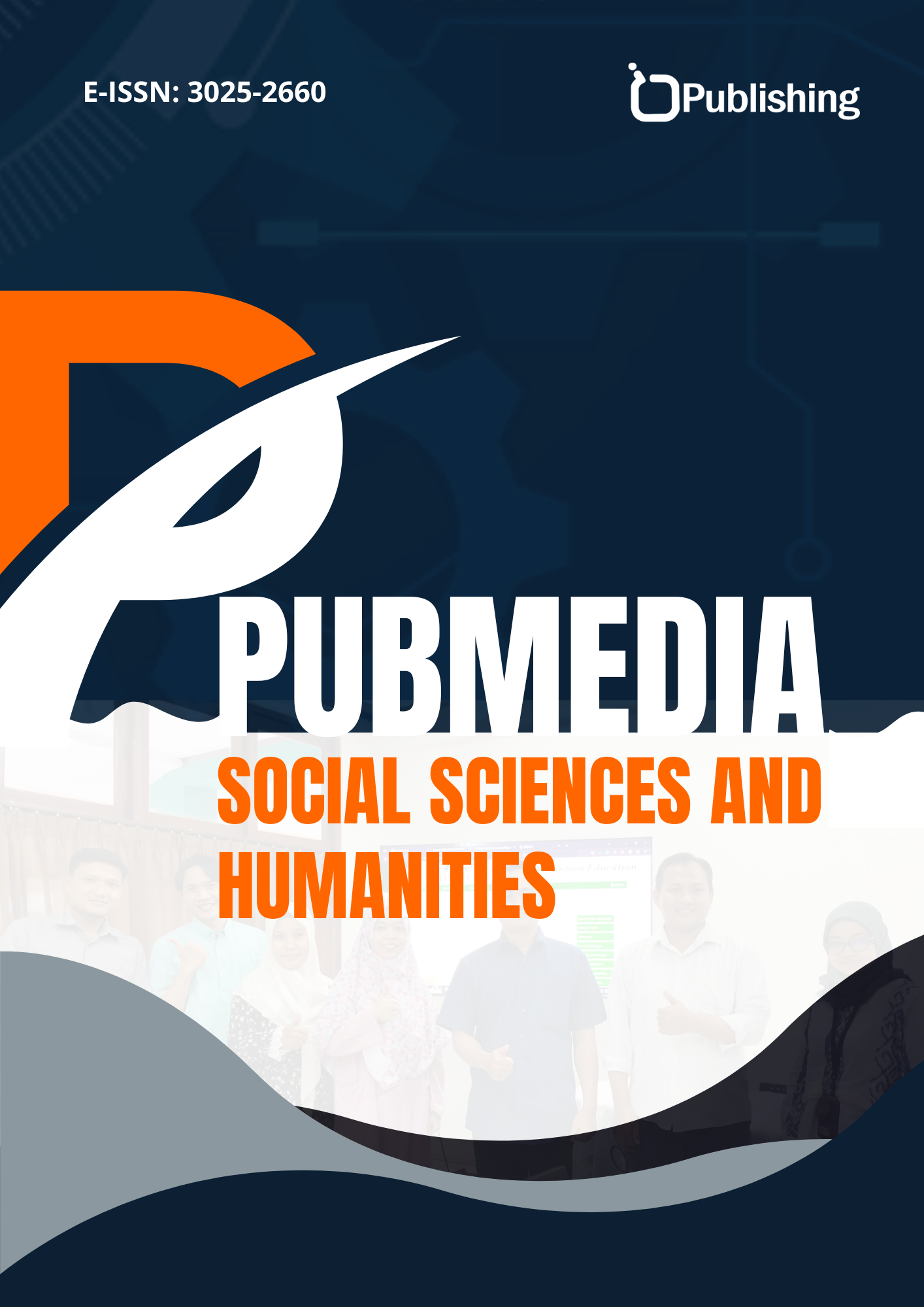Developing EFL Students’ Listening Comprehension Through The Use Of Authentic Materials
DOI:
https://doi.org/10.47134/pssh.v2i4.381Keywords:
Listening Comprehension, Authentic Materials, Second Language Acquisition, Communicative Competence, Language Learning Strategies, Real-World ListeningAbstract
The acquisition of language skills requires listening skills as a base yet English as Foreign Language (EFL) students face difficulties in spoken discourse understanding mainly due to fast speech speeds and unfamiliar words and diverse accents. A research analysis evaluates how authentic listening resources composed of real-life content from news broadcasts and podcasts and recorded conversations effectively teach students to listen more effectively. The study implemented a quasi-experimental method to evaluate 60 intermediate EFL learners through experimental (authentic materials) and control (textbook-based listening exercises) groups. Students who listened to original materials achieved much better results in listening comprehension than the control group students according to assessment results. The use of authentic materials boosted educational engagement and student motivation so they developed improved listening skills together with ability to process real-world language. Structural scaffolding options helped students manage problems related to fast speech rates and cultural references when processing the materials.
References
Andajani, K. (2023). Challenges and Attitudes of L2 Students in Listening to Authentic Conversations Podcasts: A Case Study of Advanced Level BIPA Students. Eurasian Journal of Applied Linguistics, 9(3), 168-184, ISSN 2149-1135, https://doi.org/10.32601/ejal.903015
Berardo, S. A. (2006). The use of authentic materials in the teaching of reading. The Reading Matrix, 6(2), 60–69.
Brown, H. D. (2007). Principles of language learning and teaching (5th ed.). Pearson Education.
Field, J. (2008). Listening in the language classroom. Cambridge University Press.
Gilmore, A. (2007). Authentic materials and authenticity in foreign language learning. Language Teaching, 40(2), 97–118. https://doi.org/10.1017/S0261444807004144
Gilmore, A. (2011). “I prefer not text”: Developing Japanese learners’ communicative competence with authentic materials. Language Learning, 61(3), 786–819.
Grigoryeva-Golubeva, V. (2022). Integrating YouTube Videos into an Introductory Professional Language Course for Engineering Students. Lecture Notes in Networks and Systems, 499, 138-146, ISSN 2367-3370, https://doi.org/10.1007/978-3-031-11435-9_15
Karimova, J.S. (2020). Modern methods of language learning. Journal of Critical Reviews, 7(5), 987-988, ISSN 2394-5125, https://doi.org/10.31838/jcr.07.05.200
Krashen, S. D. (1982). Principles and practice in second language acquisition. Pergamon.
Lahlali, E.M. (2017). Advanced Media Arabic, Second Edition. Advanced Media Arabic, Second Edition, 1-315
Larson, L. (2018). Bringing Stories to Life: Integrating Literature and Math Manipulatives. Reading Teacher, 71(5), 589-596, ISSN 0034-0561, https://doi.org/10.1002/trtr.1652
Li, C.H. (2013). They Made it! Enhancing University-Level L2 Learners' Listening Comprehension of Authentic Multimedia Materials with Advance Organizers. Asia-Pacific Education Researcher, 22(2), 193-200, ISSN 0119-5646, https://doi.org/10.1007/s40299-012-0012-6
Nash, K. (2018). La Historia de Mi Nombre: A Culturally Sustaining Early Literacy Practice. Reading Teacher, 71(5), 605-609, ISSN 0034-0561, https://doi.org/10.1002/trtr.1665
Nation, I. S. P., & Newton, J. (2009). Teaching ESL/EFL listening and speaking. Routledge.
Newstreet, C. (2019). Teaching Empathy: Exploring Multiple Perspectives to Address Islamophobia Through Children's Literature. Reading Teacher, 72(5), 559-568, ISSN 0034-0561, https://doi.org/10.1002/trtr.1764
Peacock, M. (1997). The effect of authentic materials on the motivation of EFL learners. ELT Journal, 51(2), 144–156. https://doi.org/10.1093/elt/51.2.144
Richards, J. C., & Rodgers, T. S. (2014). Approaches and methods in language teaching (3rd ed.). Cambridge University Press.
Rogers, C. V., & Medley, F. W. (1988). Language with a purpose: Using authentic materials in the foreign language classroom. Foreign Language Annals, 21(5), 467–478.
Rost, M. (2011). Teaching and researching listening (2nd ed.). Pearson Education.
Shamsi, E. (2024). Collaborative listening using multimedia through metacognitive instruction: a case study with less-skilled and more-skilled EFL learners. Asian-Pacific Journal of Second and Foreign Language Education, 9(1), ISSN 2363-5169, https://doi.org/10.1186/s40862-023-00248-8
Vandergrift, L., & Goh, C. C. M. (2012). Teaching and learning second language listening: Metacognition in action. Routledge.
Wang, C. (2014). Communicative validity of the new CET-4 L4 listening comprehension test in China. Indonesian Journal of Applied Linguistics, 4(1), 109-121, ISSN 2301-9468, https://doi.org/10.17509/ijal.v4i1.608
Wang, C. (2014). Communicative validity of the new CET-4 listening comprehension test in China. Indonesian Journal of Applied Linguistics, 4(1), 111-122, ISSN 2301-9468, https://doi.org/10.17509/ijal.v4i1.608
Yeldham, M. (2023). How do second language learners go about their listening when they view captioned videos? Replication studies of Taylor (2005), Winke et al. (2013) and Rodgers and Webb (2017). Language Teaching, ISSN 0261-4448, https://doi.org/10.1017/S0261444823000228
Downloads
Published
How to Cite
License
Copyright (c) 2025 Zulfizar Kochkorova

This work is licensed under a Creative Commons Attribution 4.0 International License.






